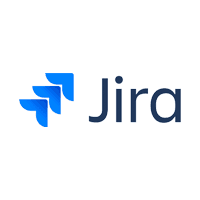Unlocking Efficiency and Collaboration: A Comprehensive Guide to Jira
If you’ve ever been part of a project, whether it’s a software development venture or a marketing campaign, you know how crucial it is to have a streamlined and efficient way of managing tasks, tracking progress, and fostering collaboration. In today’s fast-paced business landscape, the need for effective project management tools has never been greater. This is where Jira comes into play, revolutionizing the way teams work together and deliver exceptional results.
1. Introduction to Jira
Jira, developed by Atlassian, is a widely acclaimed project management and issue tracking tool designed to enhance collaboration, increase efficiency, and promote transparency within teams. Originally developed for software development teams, Jira’s adaptability has made it a popular choice across various industries.
2. The Evolution of Project Management
Traditional project management methods often involved cumbersome spreadsheets, manual updates, and a lack of real-time visibility. Jira emerged as a solution to these challenges, providing a digital workspace where teams could centralize tasks, communicate effectively, and monitor progress seamlessly.
3. Key Features and Functionality
Jira boasts an impressive array of features, including customizable workflows, task prioritization, real-time updates, and integrations with other tools. Its versatility enables teams to tailor their project management processes according to their unique needs.
4. Getting Started with Jira
To embark on your Jira journey, start by creating an account and setting up your workspace. You can choose between cloud-based or self-hosted options, each with its advantages. Once set up, you’ll be ready to explore the platform’s capabilities.
5. Navigating the Jira Dashboard
Upon logging in, you’ll encounter the Jira dashboard, your command center for project management. The dashboard provides an overview of ongoing tasks, recent updates, and customizable widgets to display relevant information at a glance.
6. Creating and Managing Projects
Projects serve as containers for your tasks and issues. You can create multiple projects, each with its own set of workflows, permissions, and team members. This segmentation enhances organization and ensures that each project’s unique requirements are met.
7. Task Creation and Assignment
In Jira, tasks are referred to as “issues.” Issues can represent anything from a software bug to a marketing campaign task. Creating an issue is straightforward, involving the assignment of a type, priority, and description. Assign tasks to specific team members and watch collaboration come to life.
8. Workflow Customization
Jira’s strength lies in its ability to adapt to your team’s preferred workflow. Customize workflows to mirror your existing processes, ensuring that tasks move seamlessly from one stage to another. This flexibility encourages consistency and accountability.
9. Agile Methodologies with Jira
Agile teams benefit immensely from Jira’s agile project management capabilities. Create boards to visualize tasks, set sprint goals, and monitor progress through features like Scrum and Kanban boards.
10. Integrating Jira with Development Tools
For software development teams, Jira’s integrations with version control systems like Git, continuous integration tools, and code review platforms streamline the development lifecycle. Enjoy traceability from code commits to final implementation.
11. Reporting and Analytics
Jira’s reporting features provide insights into team performance, project progress, and bottlenecks. Generate customizable reports to analyze trends, identify areas for improvement, and make informed decisions.
12. Jira for Non-Technical Teams
While Jira’s origins are rooted in software development, its adaptability makes it suitable for non-technical teams as well. Marketing, HR, and operations teams can leverage Jira’s capabilities to manage their projects effectively.
13. Scaling Jira for Enterprise
As organizations grow, their project management needs evolve. Jira offers enterprise-level solutions that cater to complex workflows, hierarchical project structures, and integration with other enterprise tools.
14. Best Practices for Effective Jira Usage
To make the most of Jira, adopt best practices such as maintaining a clear issue hierarchy, setting realistic timelines, regularly updating tasks, and fostering open communication among team members.
15. Conclusion
In a digital age where collaboration and efficiency reign supreme, Jira stands as a beacon of innovation. Its dynamic features, adaptability, and user-friendly interface make it an invaluable asset for teams striving to achieve their project management goals.
Frequently Asked Questions
- Is Jira suitable for small businesses? Yes, Jira’s scalability and customization options make it suitable for businesses of all sizes.
- Can I use Jira for personal task management? While Jira is designed for team collaboration, individuals can also use it to manage personal tasks and projects.
- Are there mobile apps for Jira? Yes, Jira offers mobile apps for both iOS and Android devices, allowing you to stay connected on the go.
- Can I integrate Jira with other tools my team uses? Absolutely, Jira offers a wide range of integrations with popular tools like Confluence, Trello, Slack, and more.
- Is Jira secure and compliant with data protection regulations? Yes, Jira adheres to strict security measures and compliance standards to safeguard user data.

